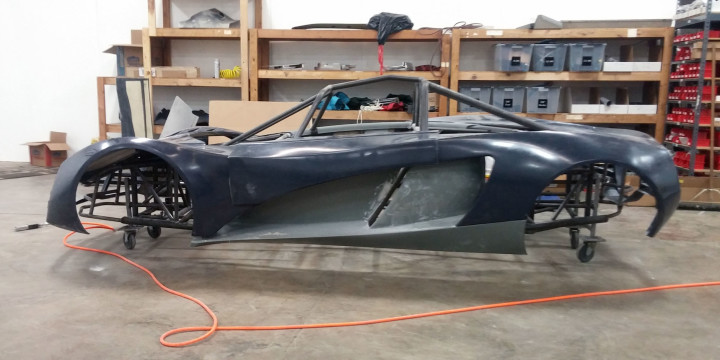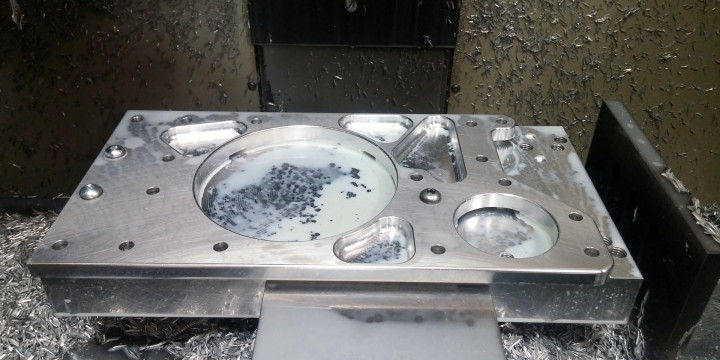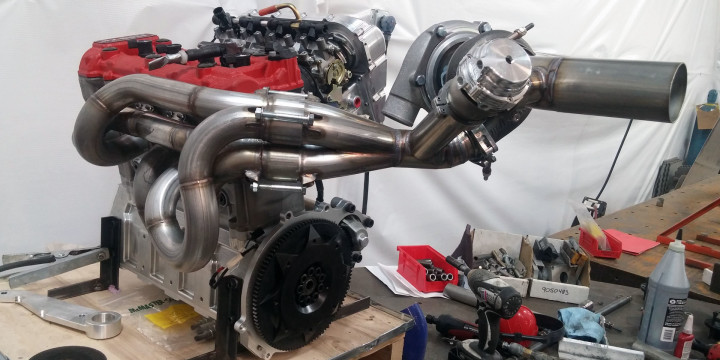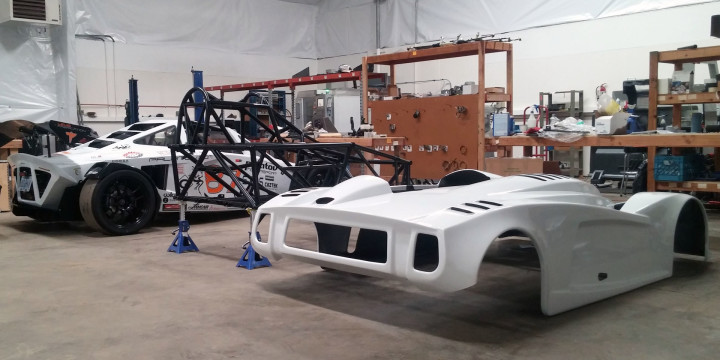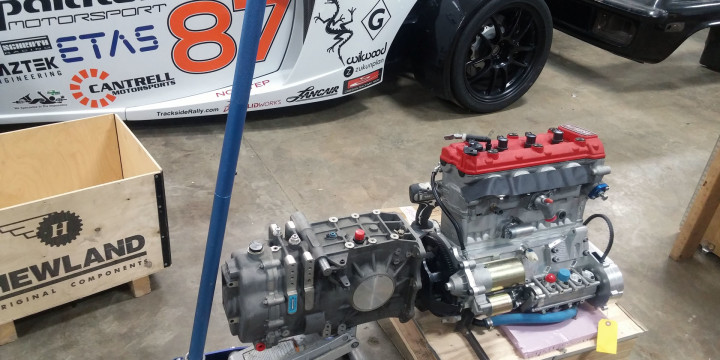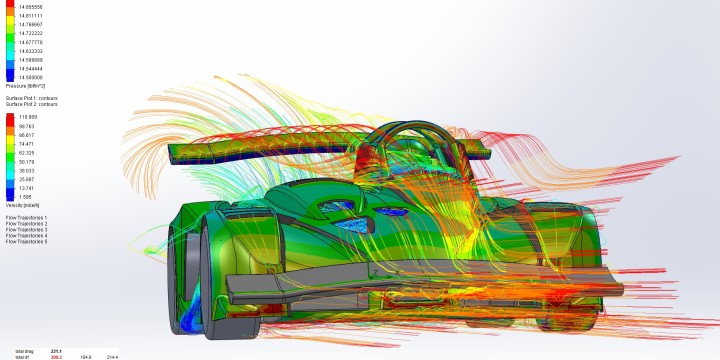Small delays are inevitable, but the big problem is that they tend to accumulate. Now, we have 10 days until we leave for testing on the Mountain. We’ve had delays in receiving (and occasionally even ordering) parts, machining, getting materials, process issues, etc. All solvable individually and we have been solving them as they come up. As you’ve probably surmised from the picture above, the D2 body panels are finally here so I will start with that.
Engine ready for dyno
I mentioned I’d talk about the D1PPS engine – it’s been an ongoing story and below are some of the highlights. As with everything we do, packaging is extremely tight. I had to take Hartley’s compact intercooler and move it closer to the block by using custom 15 degree elbows to mount the throttle bodies to the head. This in turn has created a number of problems – like having to turn the water temp sensor 90 degrees and make a lower profile thermostat housing. The former was fairly sraightforward, after we figured out what the threads are, got the rare tap and die, then fine-tuned the depth so that the adapter sealed in the right orientation.
The Pressure is ON
The time is running short and we are scrambling to make progress. As always, there are many challenges – from parts availability and delays to learning curve both for ourselves and our vendors.
D1PPS Build Continues
We are working hard to get the D1PPS together and every day more parts are completed. The bodywork is now painted and ready for graphics.
D1PPS build progress
D1PPS
There’s much building to do on the D1PPS. One area is the drivetrain. The engine is now back from Hartley. The old crank was sent along with it and is a good illustration of why I wanted to upgrade it. Being a modified stock Hayabusa crank, it still has the power take off and counterbalancer drive gears, and of course the welded flywheel mount.
Planning the Aerodynamics
Aerodynamics plays a very big part in a race car’s performance, and we need some means of evaluating potential solutions so we can compare various approaches, and then choose the most effective one. Fabricating and testing all of it is not practical. Fortunately, we have SolidWorks Flow Simulation CFD package. CFD stands for Computational Fluid Dynamics and it’s a sophisticated program that simulates fluid flow around a solid object and allows visualization as well as measurements. In many ways it can be more useful than real world testing because it gives insights not possible in real life. There’s a huge caveat though – it’s only useful if it’s accurate. And that’s much harder to do than one might think.
Here we go again!
There is a reason Pikes Peak International Hillclimb is celebrating its 100th anniversary this year – it’s a magical place, and despite (because of?) all the challenges the Mountain throws at competitors, it’s addictive. We want to come back. Also, we’ve learned a lot from the past efforts and want to try some new things. Yes, plugging in the boost controller is one of them 🙂


